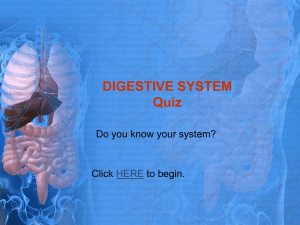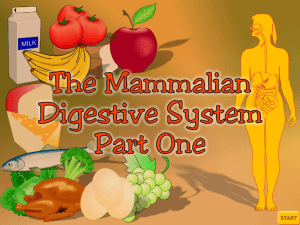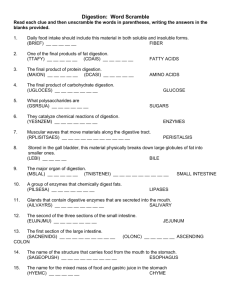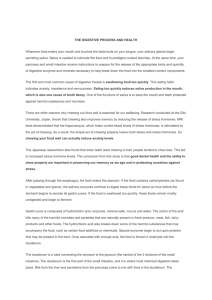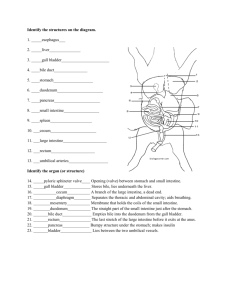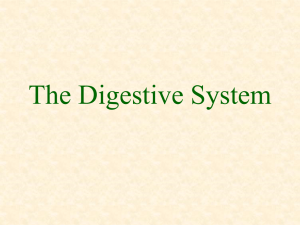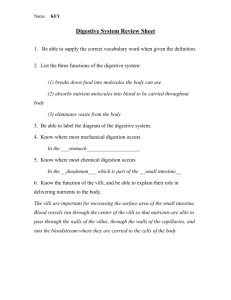Digestive System
advertisement
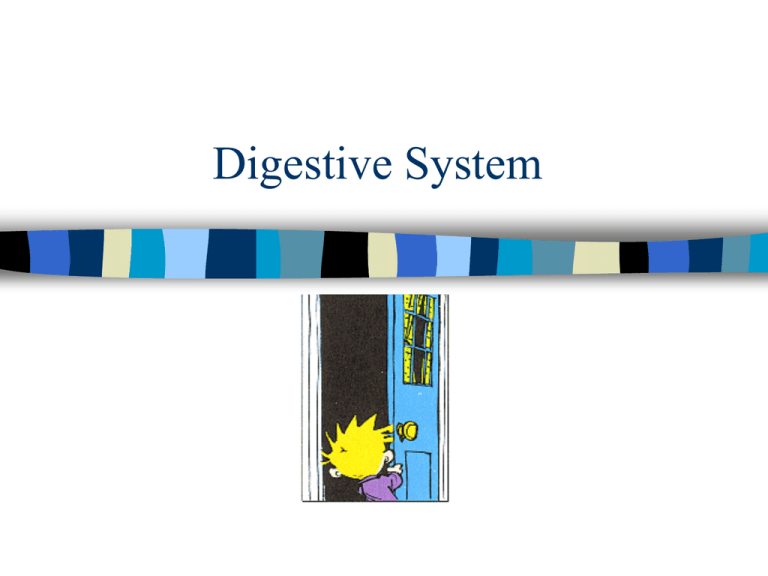
Digestive System Essential Question How does the digestive system promote homeostasis in the body Functions 1. 2. 3. Physically and chemically breaks down food into smaller pieces. Moves digested food from the digestive tract into the circulatory system through the process of absorption. Eliminates undigested food and waste products from the body. Structure # Name Description and Function 1 Mouth contains teeth, which break down food into smaller pieces by chewing, which allows food to be swallowed. 2 epiglottis This trap door belongs to both the respiratory and the digestive systems. Prevents food and fluids from draining into the lungs. Structure # Name Description and Function 3 Liver The organ secretes bile that is passed along the gall bladder for concentration and storage. 4 Gall Stores and concentrates bile, bladder and then releases it into to the duodenum to help absorb and digest fats. Structure # Name Description and Function 5 Bile duct The duct collects bile from the liver and the gall bladder as it passes along to the duodenum of the small bowel. 6 Large The large intestine passes the Intestine remaining essential nutrients into the bloodstream and the storage and elimination of waste left-over. Structure # Name Description and Function to be a vestigial structure, (a structure 7 Appendix proposed that has lost all or most of its original function through the process of evolution.) Current theory suggest that it is part of the immune system, it exposes the body to antigens and manufactures hormones during fetal development. 8 Salivary gland 3 main salivary glands deliver saliva into the mouth. The fluid helps soften up food, the first chemical action along the digestion trail. Structure # Name 9 Tongue Description and Function Muscle that is used for rolling food around your mouth so your teeth can work best. 10 Esophagus Carries food, liquids, and saliva from the mouth to the stomach through muscular contractions called peristalsis. Structure # Name 11 Stomach Description and Function Gastric acids in this organ break down food. (Chemical digestion) 12 Duodenum The first section of the twenty two food long small intestine. It is largely responsible for the continuing food breaking-down process. Structure # Name 13 Pancreas Description and Function The body’s sugar control board. Both insulin and glucagon are produced here. It secretes digestive enzymes that break down protein, fat, and carbohydrates. Structure # Name 14 Small Intestine 15 Rectum Description and Function The small bowel has 3 main sections: the duodenum, jejunum, and ileum. The duodenum breaks down food into liquid form and the jejunum and ileum absorb nutrients into the bloodstream. Stores and releases waste and stool. Brought to you by:


